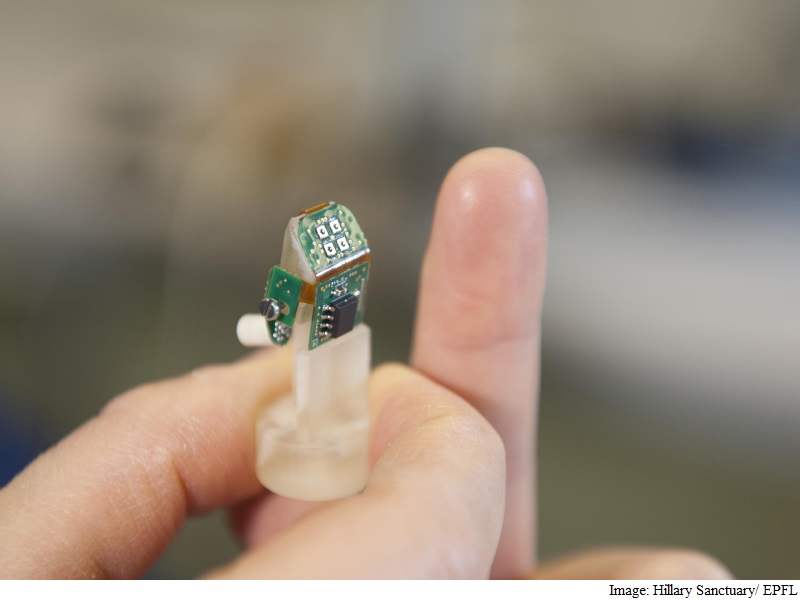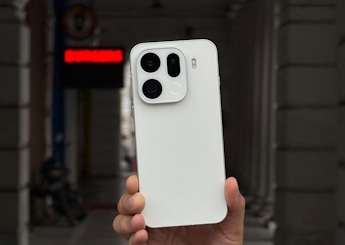- Home
- Science
- Science News
- Bionic Finger Makes Amputee Feel Texture on Phantom Hand: Study
Bionic Finger Makes Amputee Feel Texture on Phantom Hand: Study

Moreover, the nerves of non-amputees were also stimulated to feel roughness without the need of surgery, meaning that prosthetic touch for amputees can now be developed and safely tested on intact individuals, said the team from the Swiss Federal Institutes of Technology (EPFL).
The discovery by Silvestro Micera and his team at EPFL and Calogero Oddo and his team at SSSA (Scuola Superiore Sant'Anna) provides new and accelerated avenues for developing bionic prostheses, enhanced with sensory feedback.
"The stimulation felt almost like what I would feel with my hand. I still feel my missing hand, it is always clenched in a fist. I felt the texture sensations at the tip of the index finger of my phantom hand," said amputee Dennis Aabo Sorensen.
Sorensen is the first person in the world to recognise texture using a bionic fingertip connected to electrodes that were surgically implanted above his stump.
Nerves in his arm were wired to an artificial fingertip equipped with sensors.
A machine controlled the movement of the fingertip over different pieces of plastic engraved with different patterns, smooth or rough.
As the fingertip moved across the textured plastic, the sensors generated an electrical signal.
This signal was translated into a series of electrical spikes, imitating the language of the nervous system, then delivered to the nerves.
Sorensen could distinguish between rough and smooth surfaces 96 percent of the time.
In a previous study, Sorensen's implants were connected to a sensory-enhanced prosthetic hand that allowed him to recognize shape and softness.
In this new research about texture published in the journal eLife, the bionic fingertip attains a superior level of touch resolution.
This same experiment testing coarseness was performed on non-amputees, without the need of surgery.
The tactile information was delivered through fine needles that were temporarily attached to the arm's median nerve through the skin.
The non-amputees were able to distinguish roughness in textures 77 percent of the time.
The research demonstrates that the needles relay the information about texture in much the same way as the implanted electrodes, giving scientists new protocols to accelerate for improving touch resolution in prosthetics.
Get your daily dose of tech news, reviews, and insights, in under 80 characters on Gadgets 360 Turbo. Connect with fellow tech lovers on our Forum. Follow us on X, Facebook, WhatsApp, Threads and Google News for instant updates. Catch all the action on our YouTube channel.
Related Stories
- Samsung Galaxy Unpacked 2025
- ChatGPT
- Redmi Note 14 Pro+
- iPhone 16
- Apple Vision Pro
- Oneplus 12
- OnePlus Nord CE 3 Lite 5G
- iPhone 13
- Xiaomi 14 Pro
- Oppo Find N3
- Tecno Spark Go (2023)
- Realme V30
- Best Phones Under 25000
- Samsung Galaxy S24 Series
- Cryptocurrency
- iQoo 12
- Samsung Galaxy S24 Ultra
- Giottus
- Samsung Galaxy Z Flip 5
- Apple 'Scary Fast'
- Housefull 5
- GoPro Hero 12 Black Review
- Invincible Season 2
- JioGlass
- HD Ready TV
- Laptop Under 50000
- Smartwatch Under 10000
- Latest Mobile Phones
- Compare Phones
- Realme Narzo 90x 5G
- Realme Narzo 90 5G
- Vivo S50 Pro Mini
- Vivo S50
- OPPO Reno 15c
- Redmi Note 15 5G
- Redmi Note 15 Pro 5G
- Redmi Note 15 Pro+ 5G
- Asus ProArt P16
- MacBook Pro 14-inch (M5, 2025)
- OnePlus Pad Go 2
- Poco Pad M1
- Just Corseca Skywatch Pro
- Honor Watch X5
- Acerpure Nitro Z Series 100-inch QLED TV
- Samsung 43 Inch LED Ultra HD (4K) Smart TV (UA43UE81AFULXL)
- Asus ROG Ally
- Nintendo Switch Lite
- Haier 1.6 Ton 5 Star Inverter Split AC (HSU19G-MZAID5BN-INV)
- Haier 1.6 Ton 5 Star Inverter Split AC (HSU19G-MZAIM5BN-INV)

















